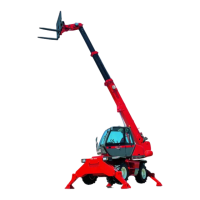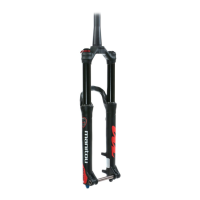2-38
DESCENT
- When the work has been completed: lower the scissors to bring the lifting platform to
transport position.
Pay attention to any people on the ground while descending, especially
when the ex
tension is still extended.tie.
SWITCHING OFF THE LIFTING PLATFORM
- When the lifting platform is no longer being used, switch off the ignition by moving
the ignition switch to the Neutral position (see 2 – Ignition switch).
LOADING / UNLOADING THE LIFTING PLATFORM
Check that the safety instructions for the transport platform are being
correctly applied before loading the lifting platform and ensure that the
driver of the means of transport has been informed of the lifting
platform’s dimensional characteristics and weight
(See the CHARACTERISTICS chapter, pages 2-14 to 2-23).
-
The lifting platform must be in transport position while being loaded onto a truck bed:
- The steered wheels must be facing the ramp (see chapter 1 to determine the direction
of travel – safety instructions and advice; §SAFETY STICKERS; 1).
- The extension must be retracted and locked.
Ensure that the truck bed is sufficiently large and has sufficient load-
bearing capacit
y to transport the lifting platform. Also check the bed’s
permissible ground contact pressure with regard to the lifting platform.
There is a risk of the lifting platform losing grip (slipping or skidding)
while climbing or descending the loading ramps, if the ramps are wet,
muddy or show traces of humidity. For this reason, a winch connected to
the machine’s tie-down points is necessary as a safety measure.
LOADING
- Fasten the loading ramps to the truck bed so as to have the smallest angle possible for
embarking the lifting platform (Fig. D).
- Lock the truck bed’s wheels 1 (Fig. D).
Please adapt the lifting platform’s translation speed by controlling it
with the tr
anslation joystick.
D
1
647369 (01/03/2017)
78/100 SEC 2 / 120 SE 2

